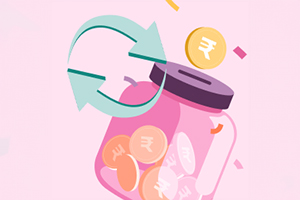The announcement of the Q2 GDP estimates for FY 2024-25 has raised significant concerns. While this may portray a
setback, many experts feel it is a temporary blip, with a steady economic growth trajectory expected ahead.
So, what is the real GDP growth estimate, and why has it attracted such attention?
Let’s explore the facts and figures, interpret the causes, and then understand the potential for recovery.
India’s GDP growth slows to 7-quarter low
India’s economic growth, represented by real GDP, has slowed to 5.4% in the second quarter of FY25, marking the
slowest growth in the past 7 quarters. This also reflects a decline from 8.1% in the same quarter last year and 6.7%
in the previous quarter.
So, are we experiencing a real slowdown?
While we are on a structural growth path, challenges prevail across key sectors with sluggish growth in cement
volume, auto sales, consumer goods and credit growth.
Retail Credit and MSME Credit, which are vital for economic growth, employment, and innovation, also suffered. There
is also a rise in non-performing assets, highlighting financial strain and downgrade.
Why did we experience a slowdown in GDP?
This slowdown was caused by bad weather, heavy monsoons, the decline in corporate earnings and reduced consumption
trends. To understand further, let’s classify them in two main underlying reasons:
- Fiscal Reasons
From the beginning of this fiscal year, there was a slowdown in government
spending. This was mainly attributed to the elections and the personnel changes in some key government
ministries, which delayed policy implementation. Capital expenditure is utmost important for driving long-term
growth.
- Monetary Reasons
The RBI’s actions to contain a high loan-deposit ratio within the banks
reduced liquidity (liquidity tightening) and further affected credit growth that slowed down lending. This
resulted in a decline in investment-led growth in the country.
Is this slowdown a temporary blip?
Efforts to address the slowdown are underway. Capital expenditure is increasing, and the RBI has eased liquidity by
relaxing monetary policy, including a CRR cut of 50 basis points.
In addition, the Central Government has introduced several measures to promote inclusion and achieve credit growth.
To drive credit growth:
- Increased access to collateral-free agriculture loans up to ₹2 lakhs to manage the rising input costs.
- Enhanced access to UPI credit systems to small finance banks.
Also Read: Fiscal Deficit - Meaning, components & causes
Wrapping Up
As the monetary and fiscal policies are in place, we may see the impact in the upcoming quarters. However, external
risks, like capital flows to the US and developments in China, may affect this process.
As individuals, we can benefit from reduced borrowing rates, manage debts and spread our investments to make the most
of this economic shift.
Stay tuned for more such informative blogs to keep yourself updated with the latest financial trends and make
informed decisions.
Disclaimer: This article is for information purpose only. The views expressed in this article
are personal and do not necessarily constitute the views of Axis Bank Ltd. and its employees. Axis Bank Ltd.
and/or
the author shall not be responsible for any direct / indirect loss or liability incurred by the reader for
taking
any financial decisions based on the contents and information. Please consult your financial advisor before
making
any financial decision.







